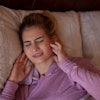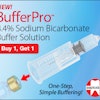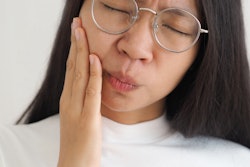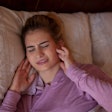
Patients with temporomandibular joint disorders (TMD) experienced significantly less pain, as well as improved diet and jaw function, after treatment with muscle exercises and digital occlusal splints. The study was published on April 17 in the Journal of Oral Rehabilitation.
Additionally, patients with anterior disc displacement with reduction, anterior disc displacement without reduction, and anterior disc displacement without reduction with osteoarthritis experienced a reduction in pain, the authors wrote.
“Pain, diet, mandibular movement, and life quality were significantly improved in each group after treatment,” wrote the authors, led by Dr. Jiangshan Hua of the Shanghai Jiao Tong University School of Medicine.
A noninvasive treatment
TMDs cause pain and affect a patient’s quality of life. Currently, TMDs can be treated with conservative methods, including medication, physical therapy, and arthrocentesis. However, arthrocentesis is invasive, and medication has certain side effects.
Traditional occlusal splint therapy is an invasive treatment that also can be used, but splints have cons, including that they are handmade, and mistakes may be made during model casting and resin curing. Since a digital occlusal splint is a new approach to treating TMDs, there is a lack of clinical evaluation, the paper's authors wrote.
To introduce a digital occlusal splint and evaluate its clinical outcomes in the treatment of TMDs, 184 patients underwent magnetic resonance imaging and were divided into three groups. The first group comprised 69 patients with anterior disc displacement with reduction. The second group consisted of 47 patients with anterior disc displacement without reduction, and the third group constituted 68 patients with anterior disc displacement without reduction and with osteoarthritis, according to the study.
The patients underwent intraoral scans. The scans were imported into software, and a balancer, an auxiliary device for determining the therapeutic jaw position, was created. The balancer consisted of a mandibular part and a maxillary part that covered the lingual sides of the dentition between the first molars bilaterally. While wearing the device, patients underwent a special muscle deprogramming process that included small, medium, and maximum mouth-opening exercises, the authors wrote.
A week after the patients began wearing the splints, the splints were adjusted. Every one to two months, patients attended follow-up visits to evaluate the clinical changes and to have the splints adjusted when necessary, they wrote.
Major improvements
After occlusal splint treatment, TMD patients saw the greatest improvement in pain with an effective rate of about 72% (p < 0.05). As for diet, mandibular function, and quality of life, the effective rates after mouthguard treatment were about 56%, 55%, and 54%, respectively (p< 0.05), the authors wrote.
Additionally, visual analog scale scores decreased successively in patients with anterior disc displacement with reduction, anterior disc displacement without reduction, and anterior disc displacement without reduction with osteoarthritis (p< 0.05). In patients with all three conditions, the effective rates of pain relief were about 85%, 77%, and 57%, respectively, they wrote. A limitation of the study was that researchers did not include patients who did not receive any treatment as a control, the authors wrote.
Though electromyogram and jaw motion analysis are needed for confirmation, “the occlusal splint may alleviate TMD symptoms by avoiding the abnormal occlusal factors' adverse stimulation of muscles and joints,” Hua and colleagues concluded.




















